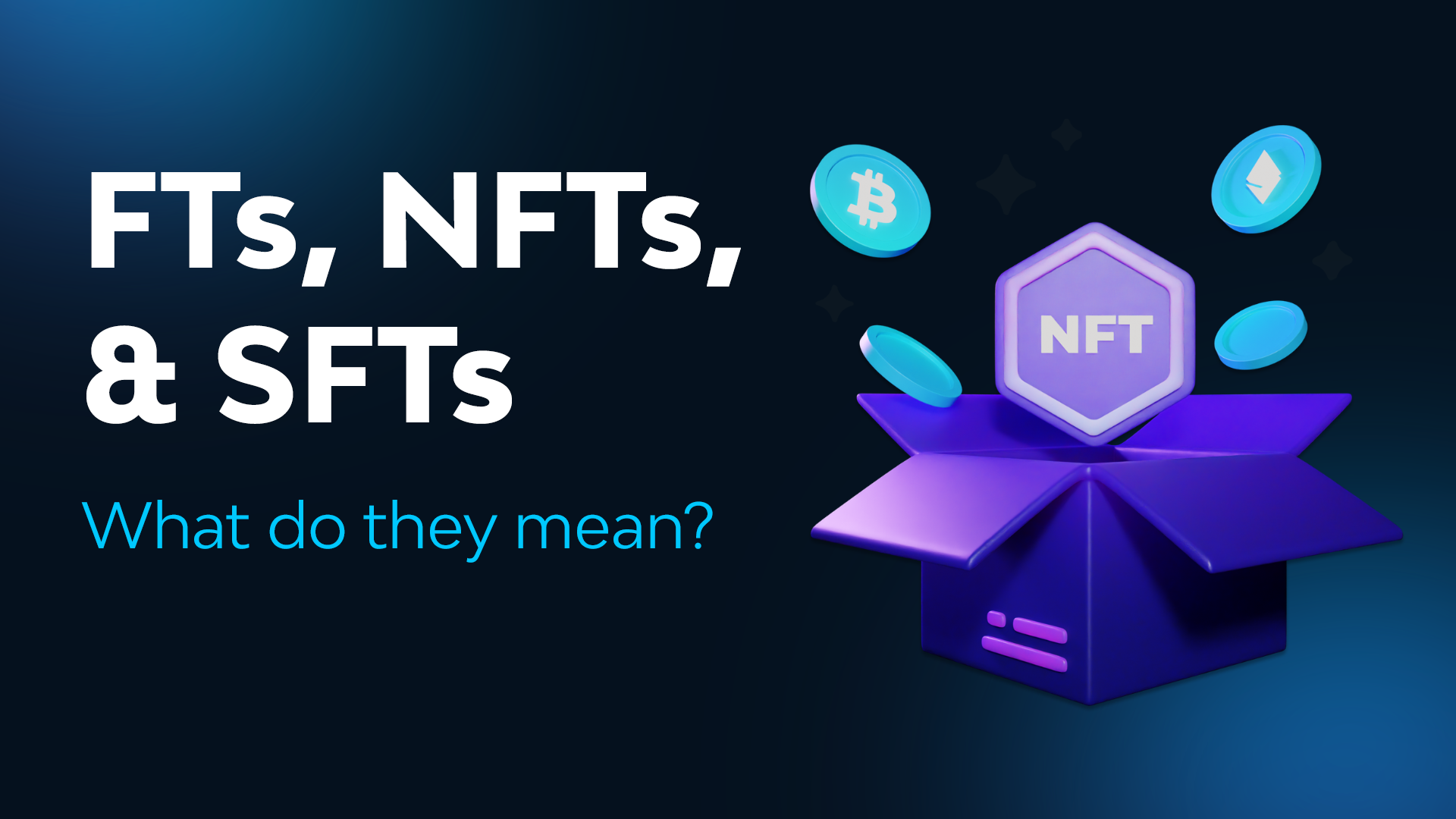As technology continues its exponential growth we are proven time and time again how quickly the world of web3 can adapt. In the last couple of years, there has been a significant uptake in gaming using blockchain technology via NFTs. SFTs are the new player in town and it’s going to help massively in blockchain gaming. What are the differences between these technologies and why are these differences important in paving the way to improving the gaming industry as a whole? In order to explain SFTs, it’s far easier to understand if we outline its predecessors first: FTs and NFTS.
FTs and NFTs
Fungible Tokens (FTs) are assets that are divisible and are not unique similar to how a one-dollar note someone is using in New York has the same properties and value as a one-dollar note someone is using in California. This concept can also be the case for cryptocurrencies hence 1 BTC would equal 1 BTC anywhere around the world.
Non-fungible tokens (NFTs) would differ in the fact each token is unique. This creates scarcity in an asset that’s completely digital which, depending on its use case, can change its value according to its scarcity and demand. This along with blockchain technology verifies to everyone the ownership of this token. In the past, games have always had collectible elements, customizable parts, and usable resources. The inclusion of NFTs simply allows all parties to benefit from their involvement. Players can own unique avatars, skins, items, etc., and have the ability to trade on a marketplace thus providing an opportunity to earn money. Developers can turn the assets they’ve created into a longstanding source of income.
All of this sounds euphoric for the gaming industry but time has also revealed some issues with its user experience. If you are creating a stackable game for example where you can mine let’s say one hundred NFTs of wood. Because of the NFT’s infrastructure, this would be resource intensive as you must then process one hundred individual transactions. If you were just to utilize fungible tokens, once a transaction is made, that’s it. Poof! You cannot reverse the transaction even if an error was made by the player. Issues like these and the volatility of the crypto market can have uncertain consequences for blockchain gaming.
Like a cowboy booting the doors of the saloon, in comes SFTs.
Semi-fungible Tokens (SFTs)
SFTs are semi-fungible tokens that are basically fungible tokens until they get used. It’s the same concept as if you were to exchange your fiat money for a gift card holding the same value, an SFT loses its value as soon as it gets used. One of the benefits of SFTs is if transactions were sent to the wrong address, SFTs hold their metadata and have the capability to reverse the transaction and get refunded. Also If we give you the same example as before, mining for one hundred wood but as SFTS, this can be done now in one transaction. Having batch transfer and multi-transfer abilities reduces costs.
It’s not a matter of which token is better, it’s about understanding thoroughly the capabilities of each token and knowing what token is best utilized in any aspect of the game you develop. From there we can create a more streamlined customer journey and develop other new technologies that can be built into the infrastructure to further enhance the blockchain gaming evolution.
Related Articles

Infrastructure, Blockchain, and Scalability with Erick Rettozi
In this article, Cyrex' Lead Backend Engineer Erick Retozzi offers expert advice on buildi...
Read more
Future Forward: Blockchain, Web3, and AI Technology with Doğukan Akkaya
Join Doğukan Akkaya as he navigates the cutting edge of technology in 'Future Forward.' F...
Read more
The trough of disillusionment – Blockchain and AI
Explore Gartner's Hype Cycle and its parallels with AI and Blockchain. From initial excite...
Read more
Deciphering the Web3 Wallet: Your Ultimate Guide to Cryptocurrency Wallets
Explore the world of Web3 wallets and their crucial role in cryptocurrency management. Dis...
Read more


